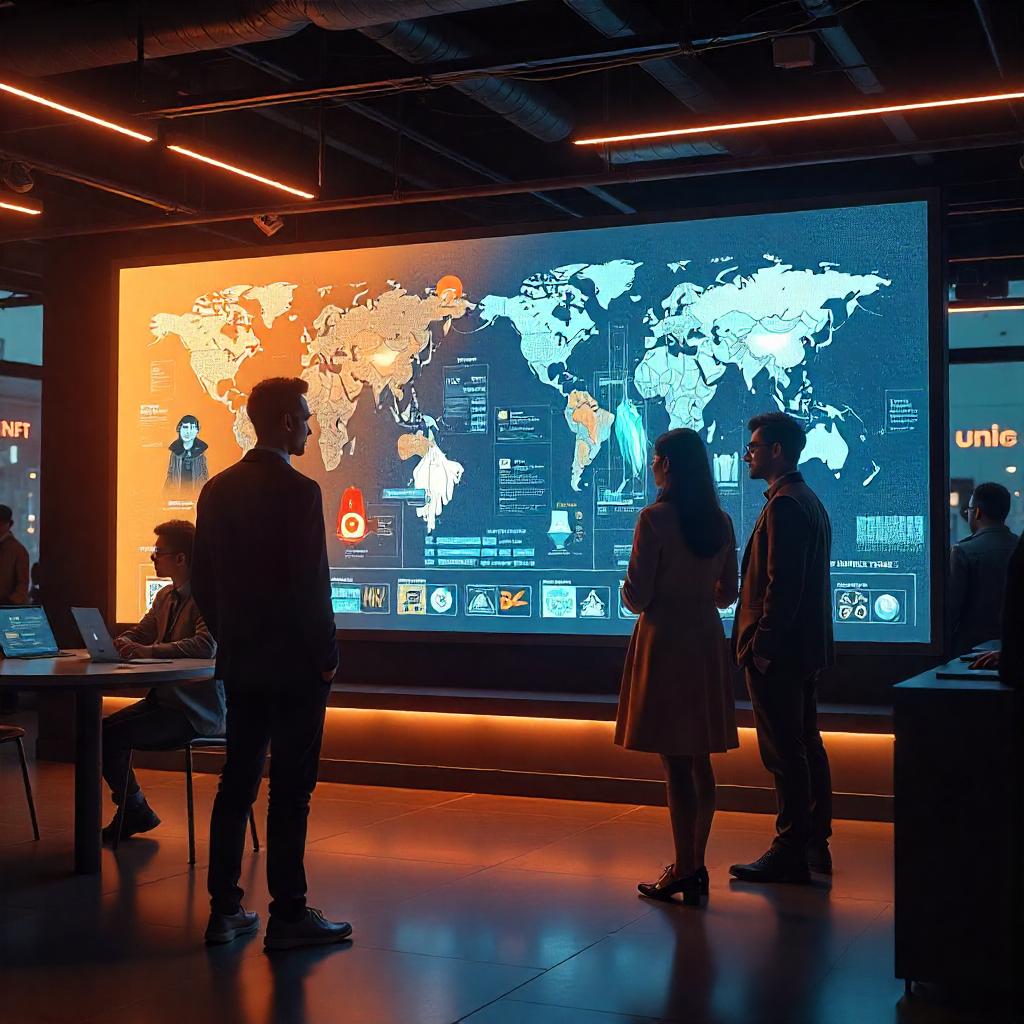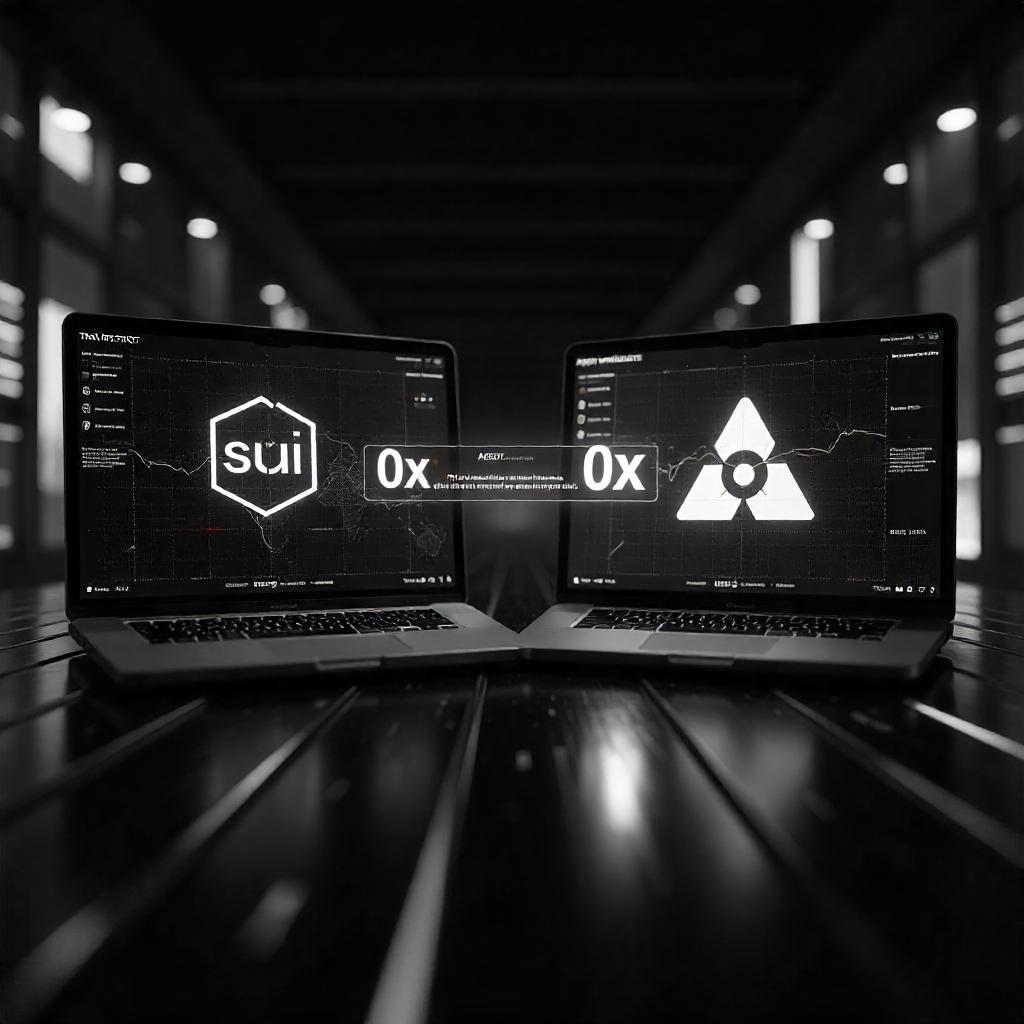In the early days of 2022, the NFT market was experiencing an unprecedented surge. Platforms like OpenSea were facilitating billions of dollars in daily transactions, and digital art was being sold for millions. However, by mid-2023, this meteoric rise had given way to a significant downturn. OpenSea, once the dominant marketplace for NFTs, witnessed a staggering 98% decline in trading volumes, dropping from over $4.85 billion in January 2022 to just $81 million by May 2025.
This dramatic shift has left many in the crypto community wondering: What happened to NFTs? Why has the market, which once seemed poised for mainstream adoption, experienced such a precipitous fall?
Several factors have contributed to this decline. The initial boom was fueled by speculative investments, celebrity endorsements, and a general sense of FOMO (fear of missing out). As the novelty wore off, many investors began to question the intrinsic value of NFTs. The lack of tangible utility, coupled with concerns over environmental impact and regulatory scrutiny, led to a loss of confidence.
Furthermore, the market became saturated with an overwhelming number of projects, many of which lacked originality or long-term viability. This oversupply, combined with diminishing demand, resulted in a significant drop in prices and trading volumes.
Despite these challenges, there are signs of resilience. OpenSea’s recent efforts to revamp its platform, including the launch of OS2, have led to an increase in active users. In May 2025, the platform recorded 467,322 active users, the highest since mid-2023. This indicates that while trading volumes have declined, interest in NFTs has not disappeared entirely.
In the following sections, we will delve deeper into the reasons behind the 98% trading volume decline, explore OpenSea’s user growth amidst low trading volumes, and analyze the broader implications for the NFT market. Through this exploration, we aim to provide a comprehensive understanding of the current state of NFTs and their potential future trajectory.
Understanding the 98% Trading Volume Decline
The NFT market’s trajectory has been nothing short of dramatic. From its zenith in early 2022, where platforms like OpenSea facilitated billions in daily transactions, to the precipitous decline that followed, the journey has been marked by volatility and transformation. This section delves into the factors contributing to the staggering 98% drop in NFT trading volumes, providing a comprehensive analysis of the events and dynamics that led to this downturn.
The Meteoric Rise and Sudden Fall
In January 2022, OpenSea, the leading NFT marketplace, reported a peak in daily trading volume at $476 million. This surge was driven by high-profile NFT launches, such as the Bored Ape Yacht Club’s Otherdeed metaverse land sale, which captivated the crypto community and attracted significant investments. However, by mid-2023, the landscape had shifted dramatically. Daily trading volumes had plummeted by 99%, and the once-thriving marketplace was grappling with a severe downturn.
Market Saturation and Oversupply
One of the primary catalysts for the decline was market saturation. The initial success of NFTs led to a proliferation of projects, many lacking unique value propositions. This oversupply diluted the market, making it challenging for individual collections to maintain demand and value. As a result, many NFTs became illiquid, with limited buyer interest, contributing to the overall decrease in trading volumes.
Speculative Bubble and Investor Fatigue
The NFT market was characterized by speculative investments, where buyers anticipated significant returns without fully understanding the underlying assets. This speculative frenzy created an unsustainable bubble. As the market matured and the speculative allure waned, investor confidence diminished. The realization that many NFTs lacked intrinsic value led to a shift from active trading to holding, further exacerbating the decline in trading volumes.
Economic Factors and Market Sentiment
Broader economic factors also played a role in the downturn. The global economic environment, marked by inflationary pressures and tightening monetary policies, led to reduced disposable incomes and a more cautious investment approach. Additionally, the NFT market’s association with the volatile cryptocurrency sector made it susceptible to market sentiment swings. As confidence in cryptocurrencies fluctuated, so did interest in NFTs, impacting trading volumes.
Regulatory Scrutiny and Legal Challenges
In 2024, OpenSea received a Wells Notice from the U.S. Securities and Exchange Commission (SEC), indicating potential enforcement action for alleged violations of securities laws. This regulatory scrutiny introduced uncertainty into the market, prompting some creators and investors to reconsider their involvement in the NFT space. The legal challenges underscored the need for clearer regulatory frameworks, further dampening market enthusiasm.
OpenSea’s User Growth Amidst Low Trading Volumes
In May 2025, OpenSea recorded 467,322 active users—its highest monthly total since mid-2023. This surge marks a significant rebound from the lows of late 2023, when daily active users had dipped below 25,000. The uptick is largely attributed to the full public launch of OS2, OpenSea’s revamped platform, which concluded its beta phase in late May.
Despite this resurgence in user activity, trading volumes have not mirrored the increase. In May, OpenSea’s trading volume was approximately $81 million, a stark contrast to the over $5 billion recorded in January 2022. This discrepancy suggests that while more users are engaging with the platform, the intensity of trading has diminished.
Several factors contribute to this phenomenon. The introduction of OS2 brought enhancements such as cross-chain token trading across 19 blockchains, a redesigned user interface, and a gamified rewards system named “Voyages,” which incentivizes user engagement through experience points (XP). These features have attracted a broader user base, including those interested in exploring NFTs and tokens across multiple chains.
Additionally, the anticipation of OpenSea’s native token, $SEA, has further fueled user interest. The platform announced plans for an airdrop of $SEA tokens to active users, with distribution based on platform activity, including earning XP through OS2’s rewards system. This initiative has likely drawn users seeking to capitalize on potential future rewards.
However, the increase in user numbers does not necessarily equate to a resurgence in trading activity. The NFT market has matured, and many users may now be more selective in their purchases, focusing on quality over quantity. Moreover, the broader economic environment and the speculative nature of NFTs may have led to a more cautious approach among traders.
Market Dynamics: Volume vs. User Activity
The NFT market has undergone a significant transformation, characterized by a stark contrast between increasing user engagement and declining trading volumes. This paradox reflects a deeper shift in the market’s dynamics, where the number of participants is rising, yet the intensity of trading is waning.
In May 2025, OpenSea reported 467,322 active users, marking its highest monthly user count since mid-2023. Despite this surge in user activity, the platform’s trading volume remained significantly below its peak levels. This divergence suggests that while more individuals are exploring the NFT space, fewer are actively engaging in transactions.
Several factors contribute to this phenomenon. The initial allure of speculative gains has diminished, leading to a more cautious approach among participants. Many users are now focused on long-term holding and collection rather than short-term trading. Additionally, the influx of new users may be driven by curiosity or the anticipation of potential rewards, such as the upcoming $SEA token airdrop, rather than a genuine interest in trading NFTs.
This shift in user behavior has implications for the market’s liquidity and overall health. The decrease in trading volume, coupled with the increase in user numbers, indicates a market that is expanding in terms of participation but contracting in terms of active engagement. This trend underscores the need for platforms to adapt and innovate to sustain user interest and foster a more vibrant trading environment.
In summary, the NFT market is experiencing a phase where user growth is not translating into proportional increases in trading activity. Understanding the underlying causes of this disparity is crucial for stakeholders aiming to navigate the evolving landscape of the NFT ecosystem.
The Role of NFT Marketplaces Beyond OpenSea
While OpenSea has long been the dominant player in the NFT marketplace arena, several other platforms have emerged, each carving out its niche and offering unique features to cater to diverse user needs. These alternatives provide specialized services, support for various blockchains, and community-driven governance, enriching the overall NFT ecosystem.
Blur: A Data-Driven Marketplace
Blur has rapidly gained traction among professional traders due to its advanced analytics tools and zero-fee structure. Launched in 2023, it offers features like real-time floor price tracking, bulk listing capabilities, and a user-friendly interface designed for efficiency. These tools empower traders to make informed decisions and execute strategies swiftly. However, it’s worth noting that Blur’s focus on professional traders may make it less appealing to casual collectors.
Magic Eden: Cross-Chain Accessibility
Initially established as a Solana-exclusive marketplace, Magic Eden has expanded its offerings to include support for Ethereum, Polygon, and Bitcoin Ordinals. This cross-chain compatibility allows users to trade a broader range of NFTs across different blockchains. Magic Eden emphasizes community engagement and creator royalties, aiming to create a balanced ecosystem that benefits both creators and collectors.
Rarible: Decentralized and Community-Focused
Rarible distinguishes itself with its decentralized governance model, where users can participate in decision-making through the RARI token. Supporting multiple blockchains, including Ethereum, Tezos, and Flow, Rarible caters to a diverse audience. The platform also offers customizable royalties, allowing creators to set their desired royalty percentages, which can enhance their earnings from secondary sales.
Nifty Gateway: Curated Drops and Fiat Integration
Nifty Gateway operates on a curated model, hosting exclusive NFT drops from renowned artists and brands. Unlike many platforms, it allows users to purchase NFTs using fiat currencies, making it more accessible to a broader audience. This approach has attracted high-profile collaborations and has positioned Nifty Gateway as a premier destination for collectors seeking premium digital art.
Foundation: Artist-Centric Platform
Foundation focuses on empowering artists by providing a platform to showcase and sell their digital art. The platform operates on an invite-only basis, ensuring a curated selection of high-quality artworks. Foundation’s emphasis on community and artist support has fostered a vibrant ecosystem where creators can thrive.
VeVe: Licensed Digital Collectibles
VeVe specializes in licensed digital collectibles from major brands like Marvel, Disney, and DC. The platform offers mobile-first experiences, including augmented reality (AR) features, allowing users to interact with their NFTs in innovative ways. VeVe’s focus on licensed content and immersive experiences has attracted a dedicated fanbase.
Other Notable Marketplaces
Several other platforms contribute to the diverse NFT landscape:
– SuperRare: A marketplace for high-quality, single-edition digital artworks, emphasizing exclusivity and artistic integrity.
– Axie Marketplace: Dedicated to the Axie Infinity ecosystem, allowing users to trade in-game assets and creatures.
– NBA Top Shot: Officially licensed NBA collectibles, offering moments from games in digital form.
– Crypto.com NFT: A platform that integrates NFTs with the broader Crypto.com ecosystem, offering a wide range of digital assets.
These platforms illustrate the multifaceted nature of the NFT market, where different marketplaces cater to specific interests and communities. As the NFT space continues to evolve, these alternatives to OpenSea play a crucial role in shaping the future of digital ownership and creative expression.
Implications for NFT Collectors and Investors
The NFT market in 2025 offers both challenges and opportunities for collectors and investors. As the market matures, there is a notable shift from speculative trading to a focus on quality and utility. Investors are increasingly gravitating toward NFTs that offer tangible benefits, such as exclusive access, governance rights, or integration with physical assets. This shift suggests that NFTs are moving beyond mere collectibles to become valuable, functional assets.
Despite a decline in overall trading volumes, NFT sales have surged in certain sectors, indicating that lower average prices are making NFTs more accessible to new investors. This price adjustment presents opportunities for those entering the market at more favorable valuations.
Regulatory developments continue to shape the NFT landscape. While the SEC has closed its investigation into OpenSea, new regulatory frameworks are expected to emerge. For collectors and investors, staying informed about these legal shifts is crucial in navigating the market safely and effectively.
Technological advancements are also enhancing the NFT market’s potential. AI-driven valuation tools, fractionalization, and NFT-based financial products are opening up new investment avenues. These innovations provide greater liquidity and transparency, allowing investors to make more informed decisions and diversify their portfolios.
As the NFT market continues to evolve, investors must prioritize due diligence, legal awareness, and a strategic focus on quality assets to succeed in this rapidly changing environment.
Future Outlook for the NFT Market
The future of the NFT market in 2025 looks promising, with several key trends pointing to growth and innovation. The market is expected to grow significantly, with projections indicating a compound annual growth rate (CAGR) of 34.53% from 2025 to 2034, driven by increasing adoption across digital art, gaming, and collectibles.
NFTs are shifting from speculative collectibles to functional assets with real-world utility. They are being used for access to online communities, event tickets, virtual real estate deeds, identity verification, and loyalty rewards. This evolution is helping NFTs transcend their initial hype and integrate more deeply into daily life.
Tokenization of real-world assets is another key trend, with NFTs being used to represent fractional ownership of valuable physical assets, such as real estate and luxury goods. This trend is expected to open up new investment opportunities and democratize access to high-value assets.
Artificial intelligence and gaming are becoming increasingly important in the NFT space. AI-generated NFTs are gaining popularity, and the gaming industry continues to drive NFT adoption. In-game NFT trading volumes have exceeded billions, demonstrating the growing importance of NFTs in the gaming economy.
The regulatory landscape is also evolving, with increased clarity and more structured frameworks emerging. This will provide greater security and stability for investors and creators alike.
Overall, the future of NFTs looks bright, with increasing adoption, technological innovation, and new use cases driving continued growth. The market is evolving from a speculative bubble to a more mature, utility-driven sector with a broader impact on industries such as art, gaming, real estate, and finance.
The Big Picture
The NFT market in 2025 stands at a transformative crossroads, evolving from its speculative origins into a more mature and application-driven sector. This maturation is characterized by several key trends and developments that are shaping the future of NFTs.
Projections indicate significant growth for the global NFT market, with a forecasted compound annual growth rate (CAGR) of 34.53% from 2025 to 2034. This growth is fueled by increased adoption across sectors such as digital art, gaming, and collectibles.
The shift towards utility-driven NFTs, the tokenization of real-world assets, the integration of AI and gaming, and evolving regulatory frameworks are all shaping the future of NFTs. As the market matures, NFTs are expected to become an integral part of various industries, offering innovative solutions and new avenues for digital ownership and engagement. The future is bright for NFTs, and those who adapt to these changes will have the opportunity to thrive in the evolving landscape.





